Introduction
With the rise of crowdfunding platforms, investing in innovative projects has become an accessible and exciting opportunity for individuals all over the world. One of the most popular platforms is Kickstarter, which has revolutionized the way entrepreneurs and creators bring their ideas to life. But how does Kickstarter investors make money?
Kickstarter is a renowned online platform that enables creators to showcase their projects and raise funds from a global community of backers who are interested in supporting innovative ideas. Whether it’s a new tech gadget, a film production, or a creative art piece, Kickstarter provides a platform for creators to present their projects and attract investors.
Unlike traditional investment models, where investors typically receive financial returns based on the success or failure of the project, Kickstarter operates on a different framework. Investors on Kickstarter are not direct shareholders in the projects they support; instead, they receive various rewards or incentives in return for their financial contributions.
While investing on Kickstarter may not come with the same financial guarantees as traditional investments, it offers investors a chance to become early adopters and supporters of innovative and groundbreaking projects. In this article, we will explore the different ways Kickstarter investors can make money and benefit from their contributions.
What is Kickstarter?
Kickstarter is a well-known crowdfunding platform that connects creators with potential investors who are passionate about supporting innovative projects. It was founded in 2009 and has since become a hub for entrepreneurs, artists, inventors, and other creative individuals seeking funding to turn their ideas into reality.
On Kickstarter, creators present their projects in the form of campaigns, which include compelling pitches and detailed descriptions of their goals, timelines, and funding requirements. These campaigns are then shared with the Kickstarter community and beyond, giving creators the opportunity to reach a wide audience of potential backers.
One of the distinguishing features of Kickstarter is its all-or-nothing funding model. This means that creators set a funding goal for their projects and a specific timeframe within which they aim to achieve it. If the funding goal is not met within the given timeframe, no money changes hands, and the project does not receive any funding. On the other hand, if the goal is met or exceeded, the project receives the funds, and the backers’ contributions are collected.
Kickstarter is open to a wide range of project categories, including but not limited to technology, art, design, film, music, publishing, and gaming. This diversity of projects makes Kickstarter an exciting platform for investors who have diverse interests and wish to support projects that align with their passions.
Moreover, Kickstarter provides a built-in system for communication and engagement between creators and backers. Backers can leave comments, ask questions, and interact with the creators directly through the campaign page. This sense of community and involvement adds an extra layer of excitement and connection for both creators and investors.
Overall, Kickstarter offers a unique and dynamic platform for creative individuals to showcase their projects and secure funding while also providing a space for investors to contribute to projects they believe in and potentially benefit from the success of these projects.
How Does Kickstarter Work?
Kickstarter operates on a simple and transparent model that allows creators to raise funds for their projects and investors to support those projects financially. Here’s a breakdown of how Kickstarter works:
1. Project Creation: Creators start by creating a Kickstarter campaign, which includes a compelling project description, a funding goal, a timeline, and details about the rewards they will offer to backers.
2. Backer Contributions: Investors, also known as backers, browse the available projects on Kickstarter and choose the ones they wish to support. Backers make financial contributions to the projects they are interested in, with the option to select a reward tier that suits their level of investment.
3. All-or-Nothing Funding: Kickstarter operates on an all-or-nothing funding model, which means that projects must reach or exceed their funding goals within a specified timeframe in order to receive the funds. If a project fails to reach its funding goal, no money is collected from the backers, and the project does not receive any funding.
4. Rewards and Incentives: Creators offer a range of rewards and incentives to attract backers and encourage them to contribute. These rewards can vary depending on the level of investment, and may include exclusive access to the project, limited edition merchandise, early bird discounts, or personalized experiences related to the project.
5. Project Updates: Throughout the duration of the campaign and even after it ends, creators provide regular updates to their backers, keeping them informed about the progress of the project, any challenges faced, and exciting milestones achieved. This communication helps foster a sense of transparency and trust between creators and backers.
6. Successful Projects: Once a project successfully reaches its funding goal, the funds are collected from the backers, and the creator can begin executing their project plan. The creator is responsible for fulfilling the promised rewards to the backers within the specified timeframe.
7. Project Completion: As the project nears completion, creators engage with their backers to provide updates on delivery schedules and any changes to the project timeline. Once the project is finalized, creators deliver the rewards to their backers as per the agreed terms.
8. Feedback and Reviews: Backers have the opportunity to leave feedback and reviews about their experience with the project, which provides valuable insights for both the creators and potential future backers.
Kickstarter’s model offers a unique way for creators to raise funds and investors to support projects they are passionate about. It fosters a strong sense of community and collaboration, bringing together creative ideas and individuals who believe in their potential.
How Do Investors Make Money on Kickstarter?
Investing on Kickstarter offers backers the opportunity to support innovative projects and be a part of turning ideas into reality. While traditional financial returns may not be guaranteed on Kickstarter, there are several ways that investors can potentially profit or benefit from their contributions. Here are some ways investors can make money on Kickstarter:
1. Rewards: The most common way backers make money on Kickstarter is through the rewards offered by project creators. Rewards can range from exclusive access to the project, early bird discounts, limited edition merchandise, or personalized experiences related to the project. Backers can choose reward tiers based on their level of investment, allowing them to receive tangible or intangible benefits from their support.
2. Equity Crowdfunding: While Kickstarter is primarily known for reward-based crowdfunding, some projects on the platform may also offer equity-based crowdfunding. This means that investors can purchase equity or shares in the project, giving them a potential financial stake in the project’s success. However, equity crowdfunding on Kickstarter is less common compared to platforms that specifically focus on equity investments.
3. Pre-Orders and Early Bird Discounts: Many projects on Kickstarter offer pre-order options or early bird discounts for their products or services. By backing a project at a pre-order tier or taking advantage of early bird discounts, investors can secure the product at a lower price and potentially benefit from the price appreciation if the product becomes successful in the market.
4. Royalties and Licensing Deals: In some cases, backers may receive royalties or licensing rights as part of their reward package. This means that if the project generates revenue through sales, licensing agreements, or other means, investors may receive a percentage or a predetermined amount of the revenue as a return on their investment.
5. Selling Shares or Exiting the Project: In rare cases, project creators may offer the option for investors to sell their shares to other interested parties or exit the project through a buyback or acquisition arrangement. This enables backers to potentially sell their shares at a higher price and make a profit if the project becomes highly successful.
6. Advertising and Marketing Opportunities: Backers who have businesses or products that align with the project they support may have the opportunity to gain exposure and reach a wider audience through advertising or marketing collaborations with the project creator. This can potentially lead to increased visibility and sales for the backers’ own ventures.
7. Co-Branding and Partnerships: Some projects may offer co-branding or partnership opportunities to backers who contribute at higher reward tiers. This allows investors to associate their own brand or business with the project, tapping into the project’s success and potentially expanding their own customer base.
8. Donations and Philanthropy: While not directly financial returns, some backers contribute to projects on Kickstarter purely out of philanthropic motives. Investing in projects they believe in and helping creators bring their ideas to life can bring a sense of fulfillment and satisfaction to these backers.
It’s important to note that financial returns on Kickstarter are not guaranteed, and investors should approach their contributions with the understanding that they are primarily supporting projects they believe in. The potential for monetary gains should be seen as a bonus rather than the primary motivation for backing a project on Kickstarter.
Rewards
One of the primary ways that investors can make money on Kickstarter is through the rewards offered by project creators. When backers contribute to a project, they typically have the option to choose from different reward tiers based on their level of investment. These rewards can include various tangible or intangible benefits that backers receive in return for their financial contributions.
The rewards offered on Kickstarter can range from exclusive access to the project, early bird discounts, limited edition merchandise, or personalized experiences related to the project. For example, if the project is a new technology gadget, the rewards may include receiving the gadget itself at a discounted price, along with additional accessories or upgrades.
Backers who contribute at higher reward tiers may also receive special perks such as meeting the creators, attending exclusive events or workshops, or receiving personalized messages or acknowledgments. These rewards provide additional value and create a sense of exclusivity for backers who invest at higher levels.
The value of the rewards can significantly vary, depending on the project and the level of investment. Backers who receive limited edition or unique items as rewards may have the opportunity to sell these items at a higher price in the future, especially if the project becomes successful and gains significant recognition or popularity.
Furthermore, backing projects on Kickstarter allows investors to be early adopters and get their hands on cutting-edge products or services before they are available to the general public. This can provide a competitive advantage for backers, particularly if the project’s success leads to high demand and limited availability.
While the primary purpose of backing a project on Kickstarter is to support innovative ideas and help creators bring their projects to life, the rewards offered by project creators can be seen as a form of return on investment. Backers are not only investing in the project itself but also receiving valuable benefits that can enhance their own lives or provide opportunities for future monetary gains.
However, it is important for backers to carefully review the details of the rewards offered before making a financial contribution. Understanding the estimated delivery timeframes, quality of the rewards, and any potential limitations or risks associated with them will help backers make informed decisions and maximize the potential benefits of their investments.
Equity Crowdfunding
In addition to the traditional reward-based crowdfunding model, some projects on Kickstarter offer equity crowdfunding opportunities. Equity crowdfunding allows backers to invest in a project in exchange for equity or shares in the project, giving them a potential financial stake in its success.
In equity crowdfunding campaigns, backers become direct shareholders in the project they support. This means that if the project generates revenue or experiences a financial return, such as through product sales, licensing agreements, or even a company acquisition, investors may receive a portion of the profits proportionate to their investment.
Equity crowdfunding on Kickstarter works similarly to other investment vehicles, but it is important to note that it is less common on the platform compared to platforms specifically dedicated to equity funding. This is because Kickstarter has primarily been known for its reward-based model, where backers receive non-monetary benefits.
Before investing in an equity-based project on Kickstarter, backers should carefully review the project’s terms and conditions, as well as evaluate the potential risks and returns associated with the project. It is important to assess the viability and growth potential of the project and consider factors such as market demand, competitive landscape, and the track record and experience of the project’s creators.
Equity crowdfunding can be an attractive option for investors who are interested in supporting projects they believe in while having the potential to reap financial returns. By investing in projects through equity crowdfunding, backers can align themselves with the project’s success and benefit from the growth and profitability of the venture.
However, it is essential to remember that investing in equity crowdfunding carries inherent risks, as projects may not always succeed or generate the expected returns. It is crucial for backers to conduct thorough due diligence and seek professional advice if needed to assess the viability and potential risks of the project before making an investment.
Overall, equity crowdfunding offers backers the opportunity to participate in the financial success of a project and potentially earn monetary returns based on its performance. It represents an alternative investment model that can provide a higher level of financial involvement and reward for backers who are interested in sharing in the project’s financial outcomes.
Pre-Orders and Early Bird Discounts
One of the ways that investors can make money on Kickstarter is through pre-orders and early bird discounts offered by project creators. Many projects on Kickstarter allow backers to pledge their support by pre-ordering the product or service being developed.
By pre-ordering the product or service, backers not only secure their spot to receive the item once it is ready for distribution but also often receive a discounted price compared to the expected retail price. This early bird discount serves as an incentive for backers to invest early and supports the project’s funding goals.
The discounted price of pre-orders can provide an opportunity for investors to make money if the product becomes successful in the market. As the project gains traction and reaches a wider audience, the demand for the product may increase, driving up its retail price. Backers who pre-ordered at a lower price can then choose to sell the item at the higher retail price, potentially making a profit.
Moreover, backers who invest at higher levels or tiers may receive additional benefits, such as exclusive upgrades, customization options, or limited edition versions of the product. The exclusivity of these options can further enhance their value and increase their potential for future monetary gains.
It is important for backers to carefully review the details of the pre-order offers, including estimated delivery times and any associated risks or limitations. Understanding the product’s market potential, the reputation and track record of the project creators, and the demand for similar products in the market can help backers make informed decisions and maximize their potential returns.
Investing in projects through pre-orders and early bird discounts offers backers the opportunity to be one of the first to receive and own a highly sought-after product or service. This not only allows backers to enjoy the benefits of being an early adopter but also positions them to potentially profit from the project’s success.
However, it’s important to note that not all projects will experience significant price appreciation or success in the market. Backers should approach pre-order investments with a careful assessment of the project’s viability, market potential, and the likelihood of the product meeting the expectations set by the creators.
By taking advantage of pre-orders and early bird discounts, backers can secure a product at a lower price and potentially benefit from its price appreciation if the project demonstrates strong market demand and success. However, like any investment, it is essential to carefully evaluate the risks and potential returns to make informed investment decisions.
Royalties and Licensing Deals
Another way that investors can make money on Kickstarter is through royalties and licensing deals offered by project creators. In some cases, backers may receive a percentage of the revenue generated by the project or have the opportunity to enter into licensing agreements with the creators.
When backers contribute to a project that offers royalties, they become entitled to a share of the profits made by the project. This can occur through product sales, licensing agreements, or other revenue-generating activities associated with the project. The royalties serve as a financial return on the investment made by backers.
Additionally, backers may have the opportunity to enter into licensing deals with the creators. This allows them to secure the rights to use the project’s intellectual property for their own ventures or collaborate with the creators on co-branded products or services. These licensing agreements can provide backers with financial benefits by leveraging the project’s success and popularity in the market.
The potential for royalties and licensing deals depends on the nature of the project and the agreement between the backers and the project creators. It is important for backers to review the terms of the project carefully and understand the revenue-sharing or licensing provisions before making an investment.
While royalties and licensing deals can provide a potential source of income for backers, it is crucial to consider the project’s market potential, the creators’ ability to execute and bring the project to market successfully, and any additional expenses or risks associated with licensing or profit-sharing arrangements.
Backers who receive royalties or enter into licensing agreements have the opportunity to earn ongoing income and potentially benefit from the long-term success of the project. As the project gains traction and generates revenue, backers can receive a continuous stream of income based on their investment.
It is important to note that not all projects on Kickstarter offer royalties or licensing deals, and the availability of these options will vary from project to project. Investors interested in pursuing these opportunities should carefully evaluate the project details, including the creators’ track record, the market potential, and the terms of the agreement, to assess the potential returns and risks.
By investing in projects that offer royalties or licensing deals, backers can potentially earn ongoing income or benefit from collaborations related to the project. Such arrangements provide an additional avenue for investors to make money on Kickstarter beyond the traditional reward-based model.
Selling Shares or Exiting the Project
While not a common occurrence, in some cases, backers on Kickstarter may have the opportunity to sell their shares or exit the project through buyback arrangements or acquisitions. This allows investors to potentially profit from their investment if the project becomes highly successful or if there is interest from other parties in acquiring the project.
If a project gains significant traction, it may attract attention from larger companies or investors who see potential in the project’s growth. In such cases, these parties may offer to buy out the project or acquire a stake in it. Backers who have invested in the project can then potentially sell their shares to these interested parties at a higher price, making a profit on their initial investment.
Additionally, some projects may include a buyback provision in their agreements with backers. This means that after a certain period of time or under specific circumstances, the project creators may offer to buy back the shares or investments made by the backers. This allows backers to exit the project and potentially earn a return on their investment if the buyback price is higher than what they initially invested.
It is important to note that the opportunity to sell shares or exit the project through buybacks or acquisitions is not guaranteed. The occurrence of such events depends on the project’s success, market conditions, and the interest and willingness of other parties to invest or acquire the project.
Backers should carefully consider the terms and conditions associated with selling shares or exiting the project. They should review the project’s arrangement or agreement, conduct due diligence on any interested parties, and seek professional advice if needed to ensure they understand the potential risks and returns associated with selling shares or exiting the project.
While selling shares or exiting the project can provide an opportunity for investors to make money on Kickstarter, it is important to recognize that it is not the primary means of gaining returns on the platform. Kickstarter is primarily known for its reward-based crowdfunding model, and the potential for selling shares or exiting the project should be seen as an additional possibility rather than a guaranteed outcome.
By investing in projects on Kickstarter, backers open the door to potential opportunities where they may be able to sell their shares or exit the project if there is interest from acquirers or the project creators provide a buyback option. Engaging in due diligence and understanding the terms and conditions associated with selling shares or exiting the project is essential for backers to make informed investment decisions.
Advertising and Marketing Opportunities
Investing in projects on Kickstarter not only provides financial support to creators but can also open up advertising and marketing opportunities for backers. By supporting a project, backers can gain exposure and reach a wider audience for their own businesses or products.
Backers who have their own businesses or products that align with the project they support can collaborate with the creators on advertising and marketing initiatives. This can include co-marketing efforts, cross-promotions, or endorsements that leverage the project’s visibility and fanbase to promote the backer’s own offerings.
Such collaborations can be beneficial for both the creators and the backers. Creators gain access to the backers’ existing customer base, allowing them to tap into a ready-made audience that may be interested in their project. Backers, on the other hand, gain exposure to a new audience that may be attracted to their products or services through the association with the project.
Collaborating on advertising and marketing initiatives can lead to increased visibility, brand recognition, and potential sales for the backers’ businesses or products. It allows them to leverage the excitement and interest generated by the project to expand their reach and customer base.
Moreover, participating in advertising and marketing collaborations can also create networking opportunities and foster relationships between backers and creators. This can lead to further collaborations in the future and establish a mutually beneficial partnership between the two parties.
It’s important for backers to approach advertising and marketing opportunities on Kickstarter with a strategic mindset. They should carefully evaluate the project’s target audience, the compatibility of their own brand or products with the project, and the potential branding opportunities that can arise from the collaboration.
While advertising and marketing collaborations can generate exposure and potentially result in increased sales, backers should also ensure that their own product or business aligns with the quality and reputation of the project they’re supporting. It is important to maintain consistency in branding and deliver on customer expectations to maximize the benefits of the collaboration.
By investing in projects on Kickstarter and leveraging the advertising and marketing opportunities available, backers can increase their brand visibility, expand their customer base, and potentially generate additional revenue for their own businesses. It provides a win-win situation, where both backers and creators can mutually benefit from each other’s reach and resources.
Co-Branding and Partnerships
Investing in projects on Kickstarter can present opportunities for backers to engage in co-branding and partnerships with the project creators. Co-branding involves a collaborative effort between two or more brands to create a joint product, campaign, or marketing initiative that leverages the strengths and audiences of each brand.
Backers who invest at higher reward tiers may have the chance to collaborate with project creators on co-branded products or services. This collaboration allows both parties to combine their expertise, resources, and customer bases to create a unique offering that appeals to a wider audience.
Through co-branding, backers can benefit from the project’s success and gain exposure to the project’s fanbase. By associating their own brand or products with the project, they can tap into the project’s existing customer loyalty and visibility.
Partnerships can also extend beyond co-branded products and include joint advertising campaigns, shared events, or even collaborations on future projects. These partnerships allow backers to leverage the project’s popularity and credibility to enhance their own brand image and expand their reach.
Co-branding and partnerships can unlock new market segments, attract new customers, and create a sense of exclusivity for backers. By aligning themselves with a successful and innovative project, backers can enhance their own brand perception and gain recognition in their respective industries.
It is important for backers to carefully evaluate the compatibility of their own brand or products with the project they are considering investing in. A strong alignment in values, target audience, and brand positioning can result in a successful and mutually beneficial co-branding or partnership opportunity.
However, backers should also exercise caution and ensure that the partnership or co-branding arrangement is based on a solid foundation and benefits both parties involved. Clear communication, defined goals, and a legally binding agreement will help set expectations and protect the interests of all parties involved.
By investing in projects on Kickstarter and engaging in co-branding and partnership initiatives, backers can expand their reach, access new markets, and enhance their brand image. This collaborative effort leverages the strengths and resources of both parties involved, creating a win-win situation that drives mutual growth and success.
Donations and Philanthropy
Investing in projects on Kickstarter goes beyond the potential for financial returns or benefits. It also provides an opportunity for backers to contribute to causes they believe in and engage in acts of philanthropy through their financial support.
Some backers choose to invest in projects on Kickstarter purely out of philanthropic motives, with no expectation of financial gain. They see the platform as a way to support innovative ideas, creative endeavors, and social impact initiatives that align with their values.
By making donations to projects on Kickstarter, backers can directly contribute to the success and realization of these projects. These donations provide the necessary funds for creators to develop their ideas and bring their projects to life, regardless of the potential financial returns.
Investing in projects on Kickstarter allows backers to be part of a community that embraces the spirit of generosity and shared support. By pledging their support, backers help projects get off the ground and can experience the satisfaction of knowing that they played a role in making someone’s dream a reality.
Furthermore, engaging in philanthropic acts through Kickstarter can have ripple effects beyond the immediate financial contribution. It can inspire others to support similar projects, creating a positive impact on society and encouraging innovation and creativity.
Backers who engage in philanthropy on Kickstarter may also receive non-financial rewards such as heartfelt thank-you messages, acknowledgments, or even the joy of knowing that they have made a difference in someone’s life or contributed to a meaningful cause.
It is important for backers to carefully review the projects they wish to support and ensure that they align with their philanthropic goals and values. By conducting research on the creators and understanding their mission and project aims, backers can make informed decisions about their donations.
While investing in projects on Kickstarter with a philanthropic mindset may not generate direct financial returns, it provides an opportunity to contribute to the greater good, support imaginative endeavors, and foster positive change.
Engaging in philanthropy on Kickstarter nurtures a sense of community, empathy, and support among backers and creators. It embodies the idea of investing in ideas and fostering a culture of generosity and shared success.
By making donations on Kickstarter, backers can make a positive impact and contribute to projects that align with their philanthropic goals and values. Investing in projects with a focus on giving back fosters a spirit of collaboration, empathy, and social responsibility within the Kickstarter community.
Conclusion
Kickstarter offers a unique crowdfunding platform where investors can support innovative projects and potentially benefit from their contributions. Backers have various opportunities to make money or gain value from their investments on Kickstarter.
Rewards form a significant part of the Kickstarter experience, where backers receive tangible and intangible benefits in return for their financial contributions. These rewards can range from exclusive access to the project, limited edition merchandise, or personalized experiences related to the project.
Equity crowdfunding provides an opportunity for backers to purchase shares in a project and potentially profit from its success. While less common on Kickstarter, it allows investors to have a financial stake in the project’s performance and potentially earn monetary returns.
Pre-orders and early bird discounts enable backers to secure a product or service at a lower price and potentially benefit from price appreciation if the project achieves success in the market. Timing is crucial in securing these early bird opportunities.
Royalties and licensing deals allow backers to receive a share of the profits generated by the project or enter into licensing agreements, which can bring ongoing income or collaboration opportunities.
Selling shares or exiting the project through buybacks or acquisitions provides an avenue for backers to potentially profit from their investments if there is interest from acquirers or the project creator offers a buyback option.
Backers can also benefit from advertising and marketing opportunities, leveraging the project’s visibility and fanbase to promote their own businesses or products. Co-branding and partnerships with project creators can enhance brand recognition, expand the customer base, and create new market opportunities.
Engaging in donations and philanthropy on Kickstarter allows backers to support causes they believe in and contribute to projects without expecting financial returns. It fosters a sense of community, generosity, and positive impact.
While Kickstarter offers potential avenues for backers to make money or gain value from their investments, it is important to approach investments with a balanced perspective. The primary goal of Kickstarter is to support projects and creators, and any financial gains or benefits should be seen as secondary to the overall purpose of crowdfunding innovation.
Investing on Kickstarter provides a unique opportunity for individuals to support creative projects, engage with a passionate community, and potentially reap rewards, both monetary and intangible. It combines the thrill of investing with the satisfaction of helping bring innovative ideas to life.







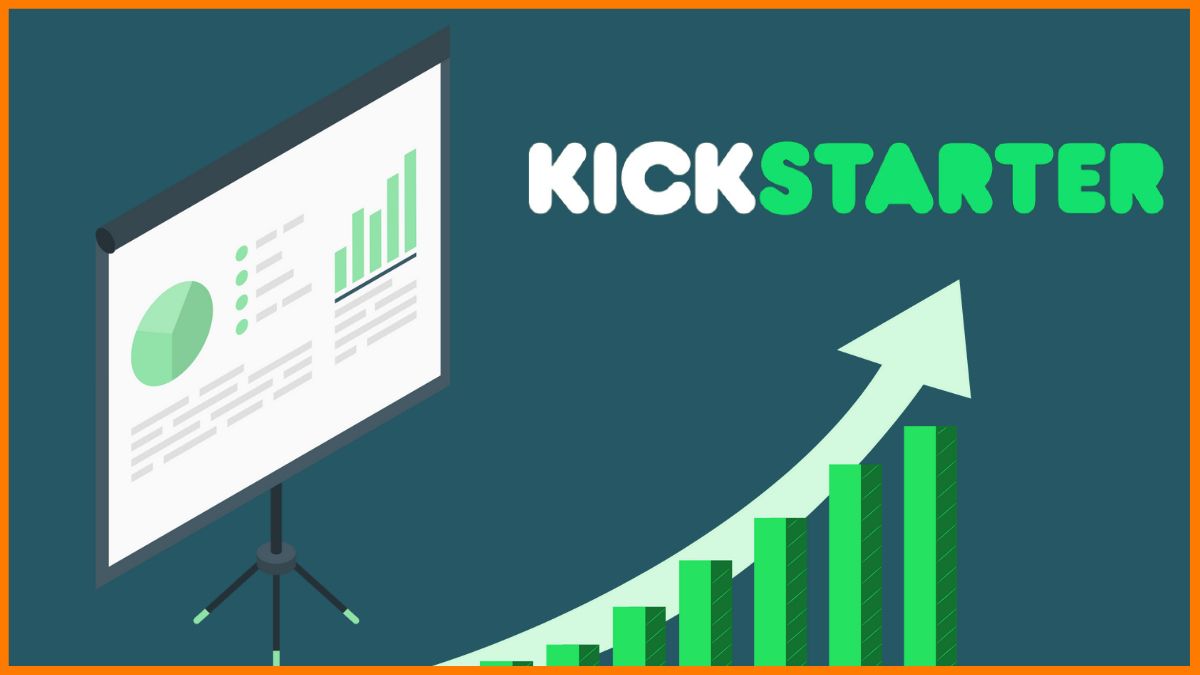

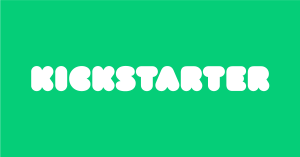
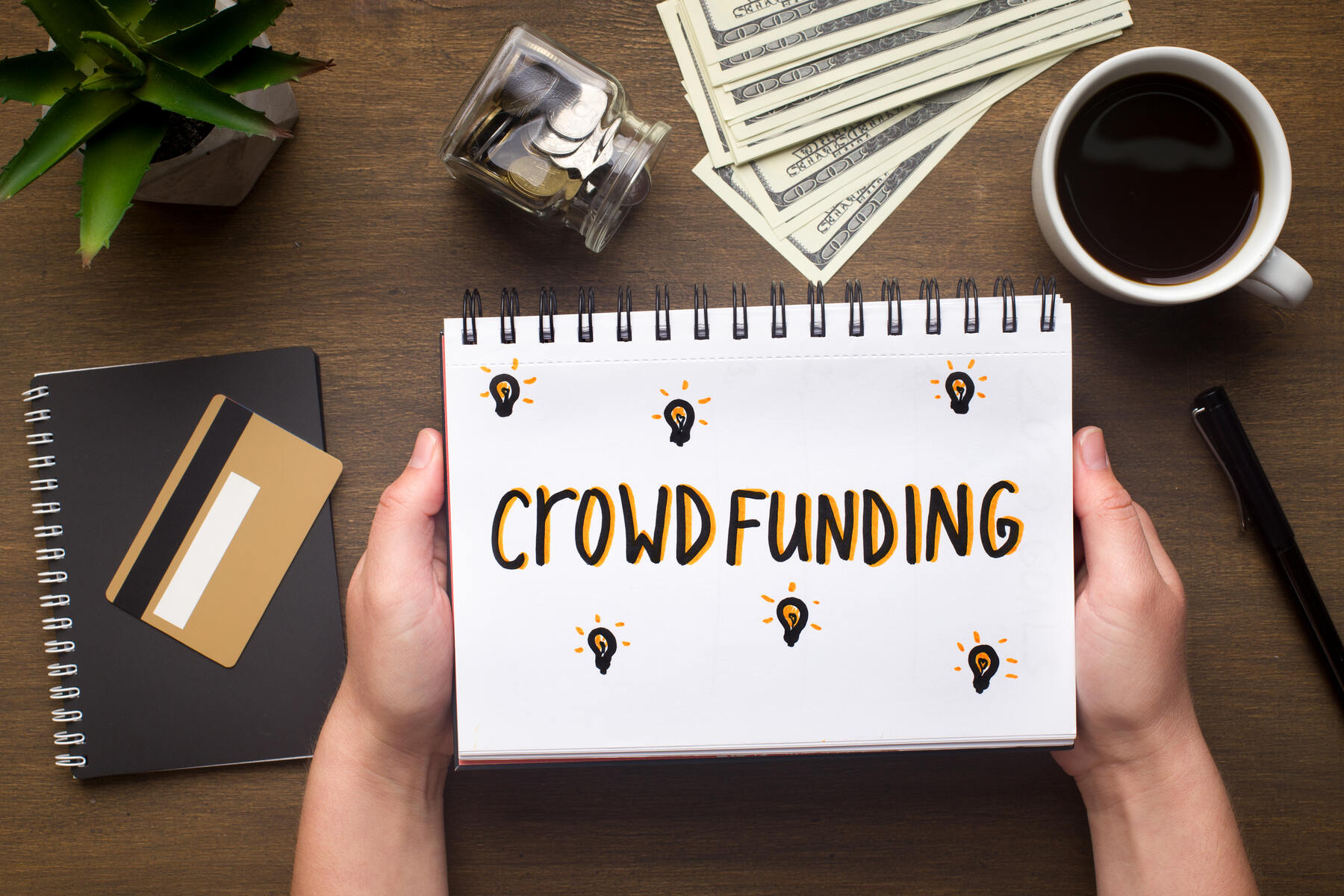

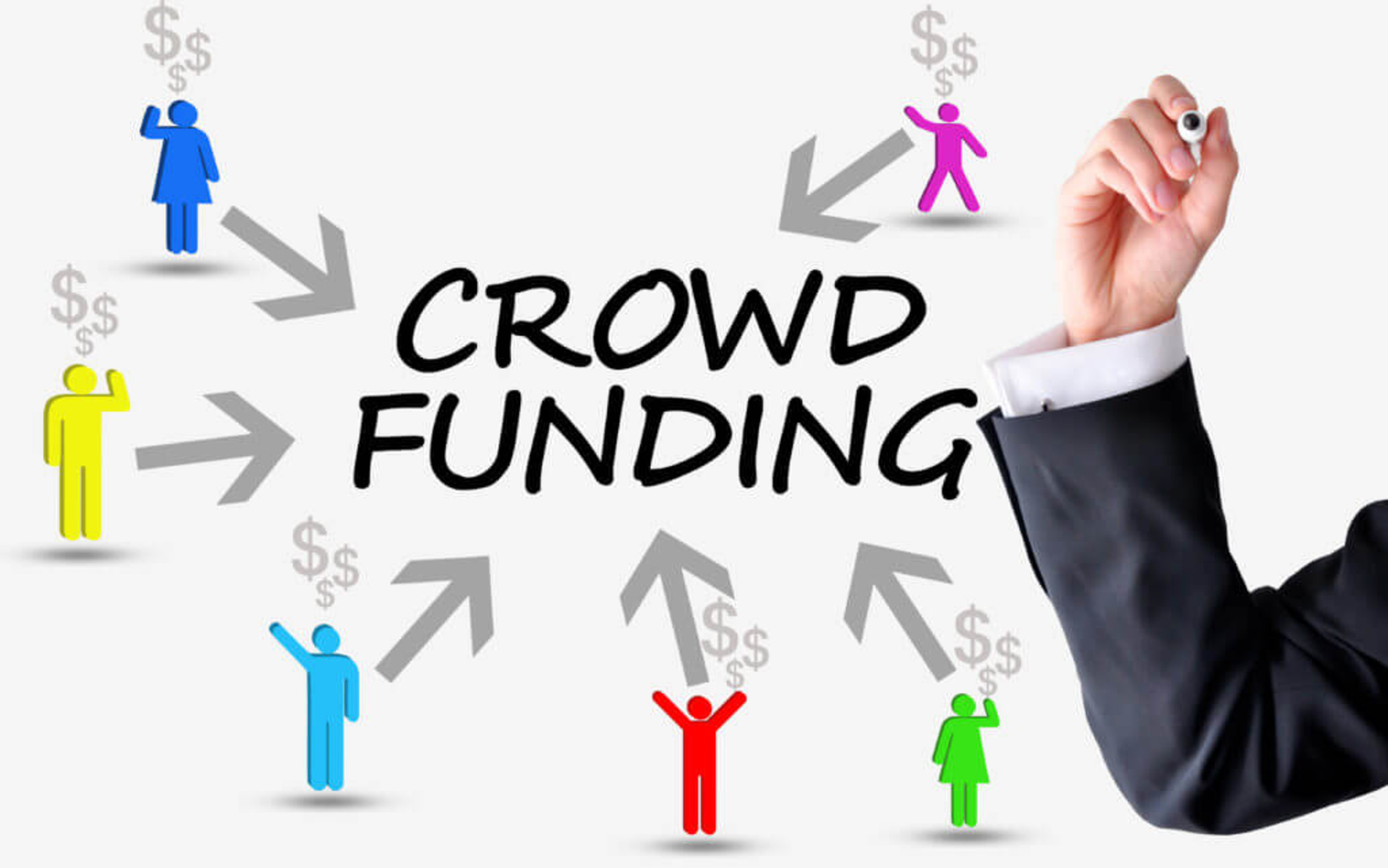
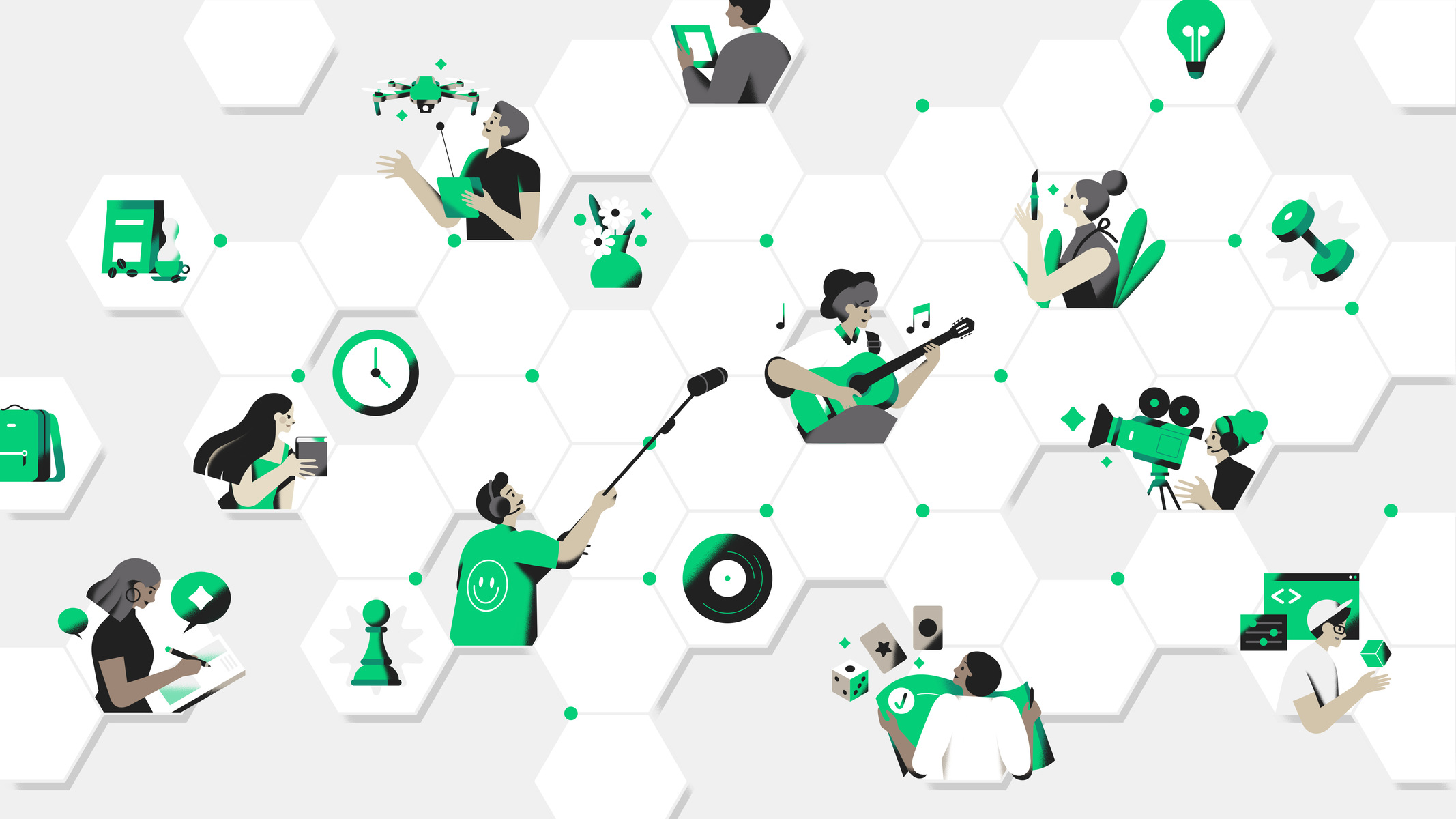
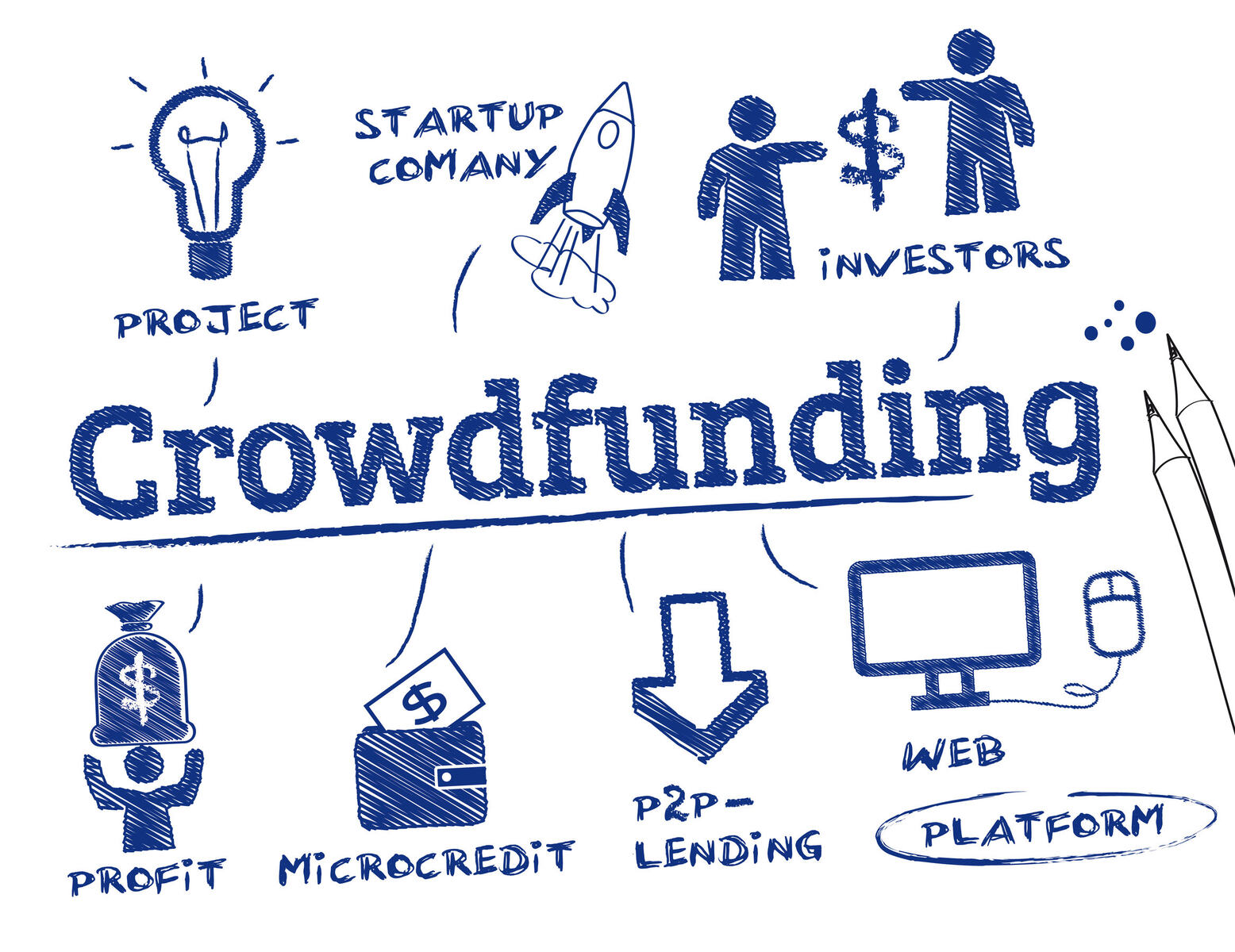

![How Does Crowdfunding Work? [Beginner-Friendly]](https://robots.net/wp-content/uploads/2020/07/How-does-crowdfunding-work-300x212.jpg)








